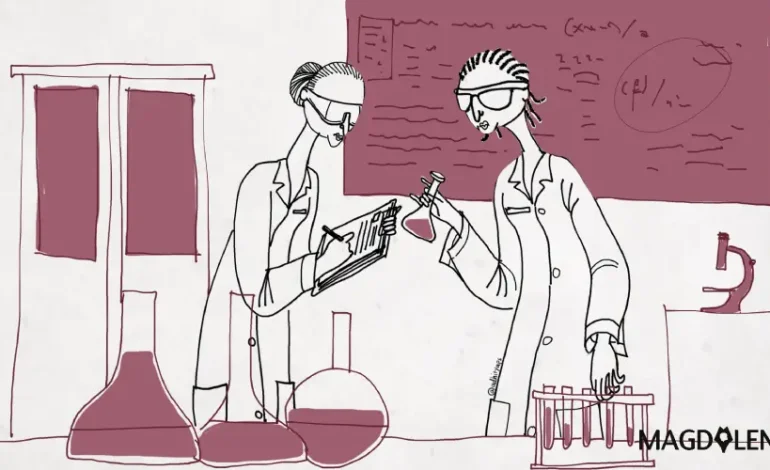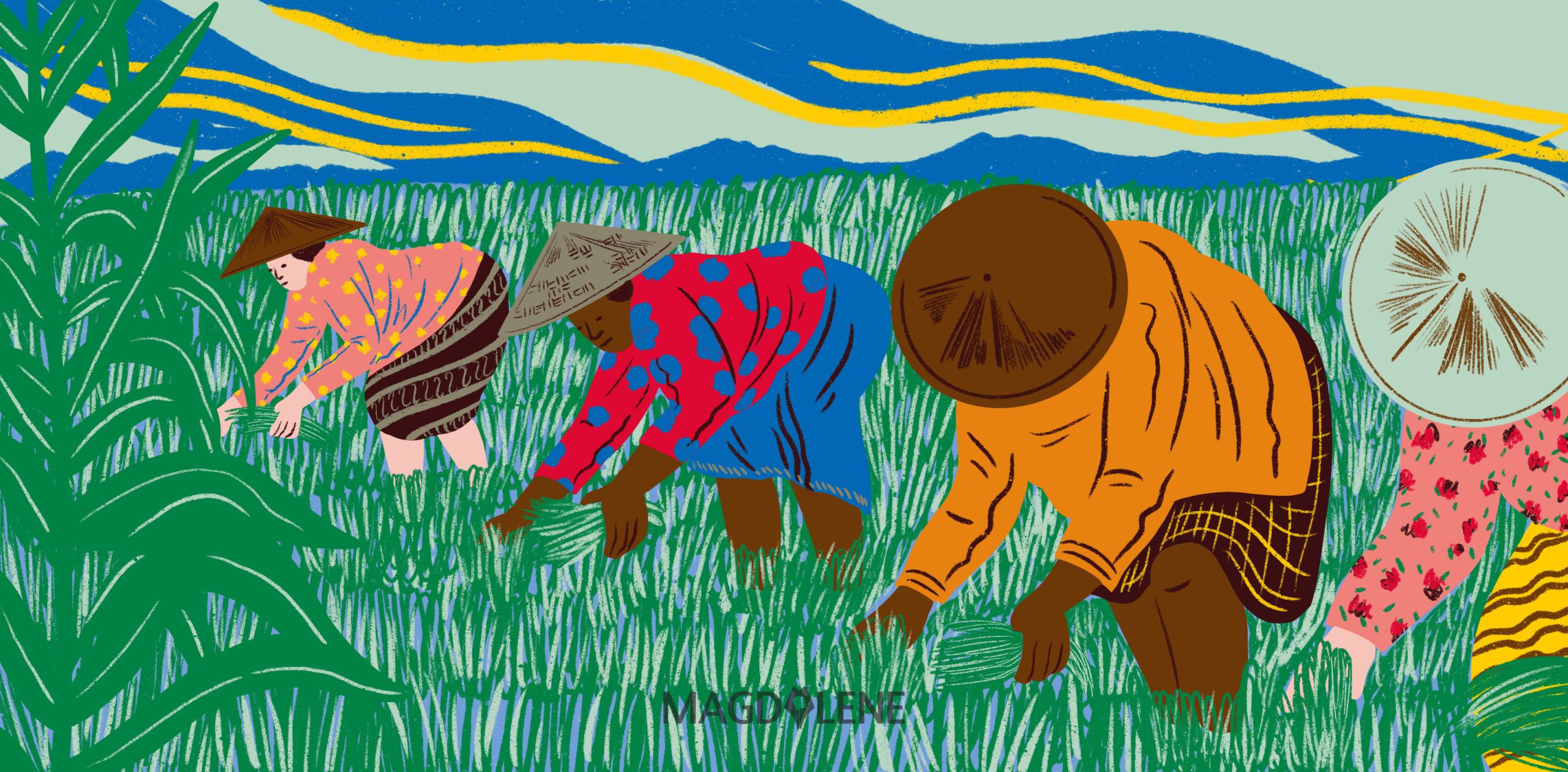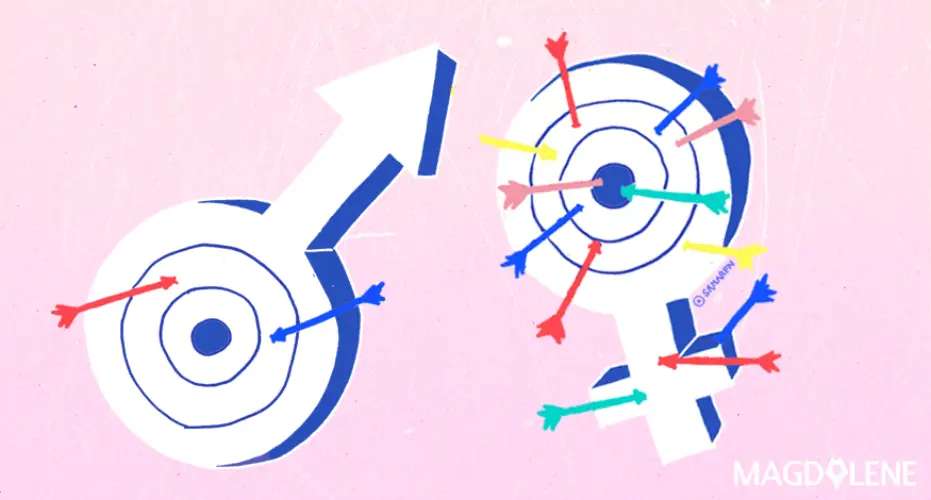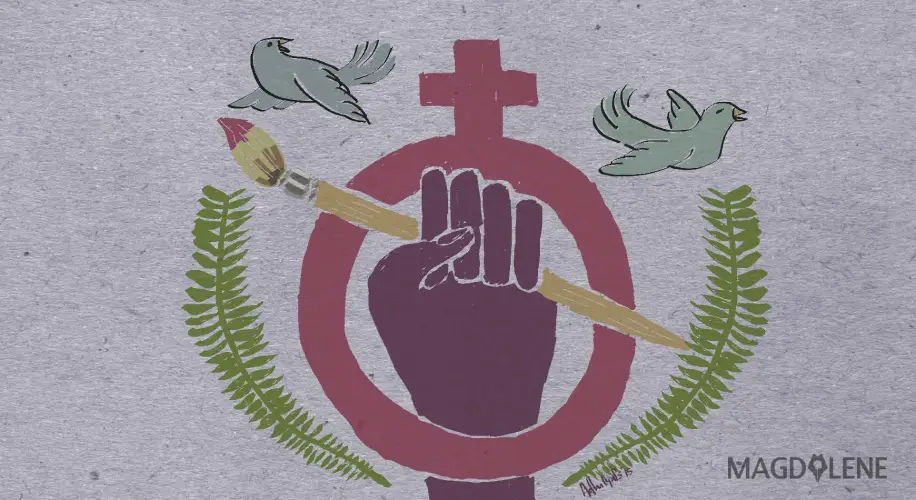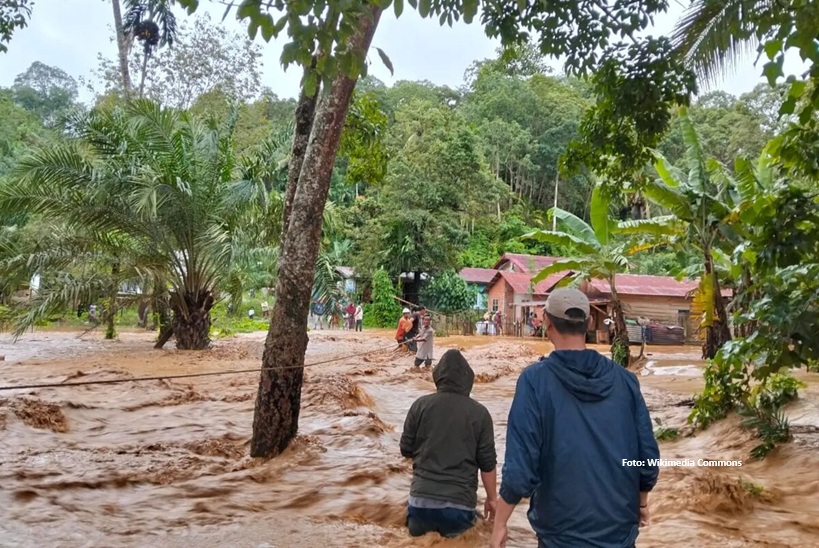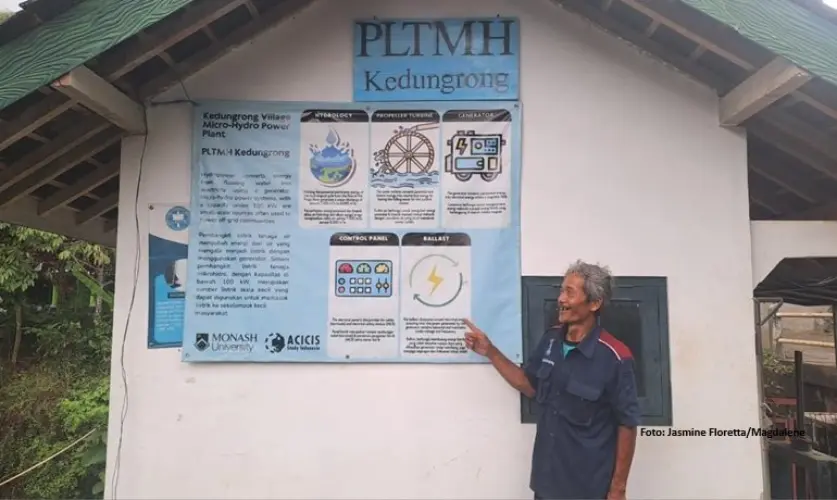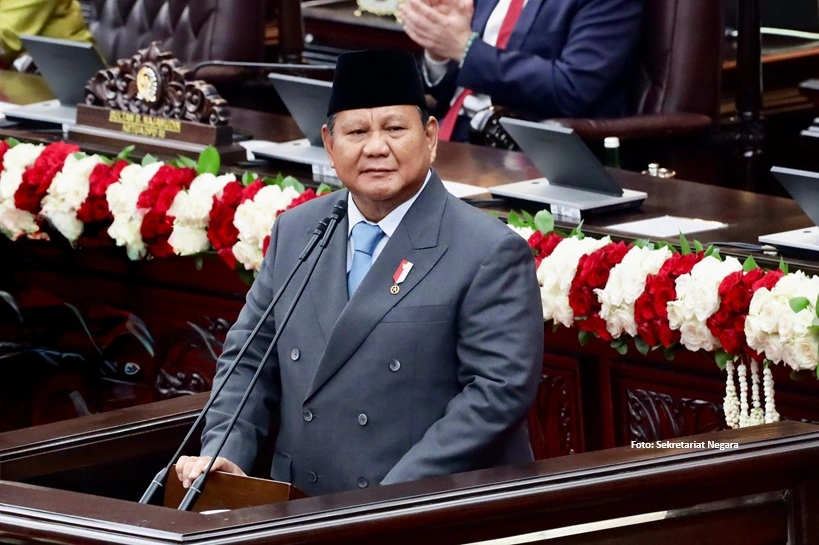In NTB: Communities Adopt Their Own “Laws” to Stop Child Marriage
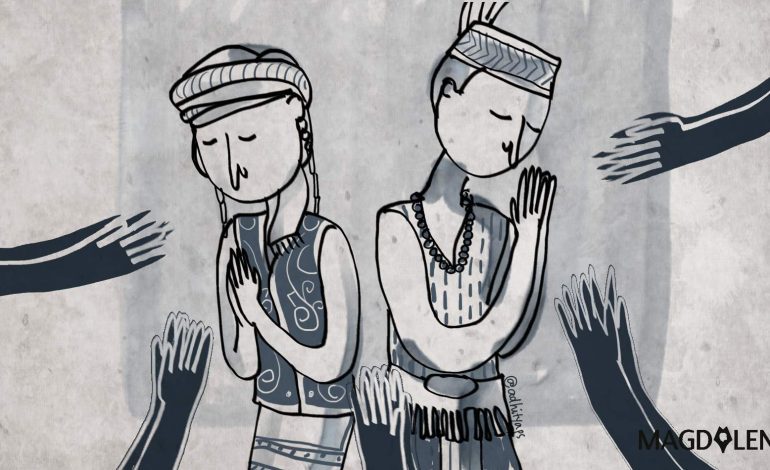

At 20, Rukaiyah, a mother of two, is twice divorced and is currently married to husband number three. Her first marriage was forced on her when she was 15.
“My boyfriend and I arrived home late – at 9 p.m,” she recalled the night that changed her life forever. “My aunt, with whom I was living at the time, was enraged: ‘I don’t want to hear anything! You have to get married!”
Rukaiyah had just graduated from middle school then in Mataram, West Nusa Tenggara (NTB), and had only been seeing her boyfriend, who was in the second year of high school, for three weeks. Marriage was the last thing in their mind; they had both wanted to continue their education.
That fateful night he had just picked her up from the shop where she worked and took her to her parents’ house so she could get some clothes.
“We missed the curfew, and the next morning we had to get married,” she said in a conversation with Magdalene and a few other media organizations on a trip to West Nusa Tenggara with non-profit development organization Oxfam.
That curfew, 7:30 p.m., is socially imposed on all unmarried people in communities across West Nusa Tenggara, and local tradition dictates that failing to meet it can result in forced marriages, like Rukaiyah’s first. The rationale is that if two unmarried people of different genders are still out late at night, unsavory rumors will spread about them, resulting in their and their families’ alienation in the community. A marriage is seen as way to save face.
We missed the curfew, and the next morning we had to get married.
Since her first marriage, Rukaiyah has been struggling with poverty. She couldn’t continue her education because the school feared she would “contaminate” and “damage” other kids. In short, Rukaiyah became a victim of her own culture.
Lilik Agustiningsih, the head of Women Farmers Group of the Indonesian Women Coalition (KPI), said schools tend to be more punishing to girls than boys when it comes to child marriage. KPI provides mediation services to couples seeking a divorce, as well as safe house to those who need refuge.

“Even if the school allows her to study, if her husband forbids her to go, she cannot go. It is a very patriarchal society here,” Lilik said.
Just as dire as education are the problems of child malnutrition and abandonment caused by child marriage in West Nusa Tenggara.
From her second marriage Rukaiyah has a daughter, and from her third a son. She struggles to make ends meet on a meagre income as a domestic worker for her neighbor, so much so that she nearly gave her son up for adoption. Stripped of her rights to education and economic capacity, Rukaiyah has been a victim of domestic violence throughout her marriages.
“My first husband did not provide for me. He often left home for several months without telling me. Whenever I demanded an explanation, he became angry. He banged my head into the wall, and even stepped on my head a few times. Eventually I told my parents about the violence I experienced, then we all agreed to separate,” she said.
Her current husband also does not provide for her and her children, she said.
Merariq and the “kidnapping” tradition
While Rukaiyah had never intended to marry so young, many children in West Nusa Tenggara actually do want to marry young, often taking advantage of a tradition called merariq. In the practice of merariq, which literary means stealing, a guy takes away a girl at night without her parents knowing. Merariq has become the main reason why child marriage practice is pervasive in NTB, causing myriad problems including high number of divorce, limited education and economic capacity, child malnutrition and abandonment and the prevalence of domestic violence
Three years ago Muhammad Samsul Rizal committed merariq on his then 16 year-old girlfriend.
“We married when I was 28,” said Rizal, his wife Mubarrat Aiq sitting next to him when we visited his small videography studio at Kekait village (20/2).
I thought marriage would be easy. People here said that ‘a cow will live even if there’s no grass’, but no, it’s not enough—it’s not that easy.
“We had been dating for eight months when one day I told her I was going to get some money,” he said. “But when we were on our way, I took a detour. I said ‘Let’s merariq’, but she refused. She cried, but I forced her. I hid her away for one night in my friend’s house. We went home in the next morning, then got married a week later.”
“It wasn’t a problem legally because she was 16 then. But a few years later I realized that what I had done was wrong,” he added.
Rizal admitted he was being naive when he had the idea to get married.
“I thought marriage would be easy. People here said that ‘a cow will live even if there’s no grass’, but no, it’s not enough; it’s not that easy,” he said, glancing at his wife who was holding their baby daughter.
.jpg) His biggest guilt is that his wife never got to finish her education. “Whenever we fought, she kept saying that, ‘If only you didn’t take me merariq, if only I finished school, our lives would be better now.’ I cried whenever she said that. I’ve promised her and promised myself that I would do anything I could to help her pursue her dreams. My wife wants to be a writer, I vow to help her make it come true.”
His biggest guilt is that his wife never got to finish her education. “Whenever we fought, she kept saying that, ‘If only you didn’t take me merariq, if only I finished school, our lives would be better now.’ I cried whenever she said that. I’ve promised her and promised myself that I would do anything I could to help her pursue her dreams. My wife wants to be a writer, I vow to help her make it come true.”
His wife is currently trying to pursue Paket C certificate for high school drop-out.
Since 2015, Rizal has been involved in a youth movement against child marriage. He produced a 30-minute film entitled “Masak Odaq”, which portrays his personal lives and struggles after marriage. It has often been screened in the campaign against child marriage in West Nusa Tenggara.
“It is always the women who are the victims,” he added.
Originally, merariq was intended to avoid chaos and conflicts, said Srianim, the Branch Secretary of KPI in West Lombok.
“One young woman could have a lot of young men coming to her house expressing interest. If the young woman openly made her choice, it could end up in fights between the men. So in order to marry her, a man needs to take her away secretly, through the back door,” Srianim said.
While in other cultures in Indonesia, the Javanese, for example, it is common for a man to propose to a woman, and to ask for consent from her parents, the West Nusa Tenggara people believe this is degrading and disrespectful. The man needs to ask the woman’s consent to runaway silently. Only after that, they would gain their family’s permission to marry each other.
However, merariq practice has shifted from its initial purpose to let a woman choose her own partner. These days, with nearly everyone owning a cell phone, merariq can be arranged easily through text messages between the couples. A girl can unsuspectingly agree to meet up with a total stranger she meets on Facebook or through a “wrong-number” call.
The fact that many parents work outside of town or overseas as migrant workers also means there is less parental guidance for the kids, making them more prone to making reckless decisions, including getting married, said Srianim.
Awig-awig, a community-driven initiative to stop child marriage
Oxfam works with youth organization SANTAI (Yayasan Tunas Alam Indonesia) to help reduce the prevalence of child marriage in NTB. They aim to raise the marriage age in the area by getting communities to adopt their own local customary law called ”awig-awig.” In 2014, Oxfam and SANTAI kicked off the program at the village of Kekait, followed by four other villages in West Lombok including Lembah Sempaga, Dasan Griya, Montong Are, and Bengkel.
“Oxfam and SANTAI have agreed on some strategies to approach the child marriage problem by establishing a local youth organization in each village to advocate awig-awig; build networks between the authorities, customary leaders and religious figures; as well as implement the campaign,” said Juliana Ndolu, Gender Justice Partner Coordinator of Oxfam, during our media visit to SANTAI office in Karang Tengah, Mataram last week. The support comes in the forms of funding, technical assistance, program design, campaign, documentation and publication.
Awig-awig is seen as the most effective set of regulation to reduce child marriage. It is drafted by the local community and formulated based on their needs and preferences.
Established in 1986, SANTAI had focused mainly on child issue, but in recent years it started to target the youth as a strategic group that can initiate changes in the community. To tackle the child marriage issue, it established the Forum Pemuda Peduli Perkawinan Anak (Youth Forum Against Child Marriage).
Awig-awig is seen as the most effective set of regulation to reduce child marriage. It is drafted by the local community and formulated based on their needs and preferences. Because awig-awig has such a direct impact on the local community, the rules could be different from one village to another.
“Back in 2014, we felt pessimistic about the likelihood of producing awig-awig,” said Suharti, Director of SANTAI in NTB. “The pro-cons arguments among religious figures, customary leaders, and the children themselves were pretty tough. Luckily, we have the youth. Each of them has different capacity. There are some who could approach religious and customary leaders, others could approach the village authorities, and the rest had successfully approached their fellow youth.”
It took about a year to formulate awig-awig in Kekait Village, said Suharti. Much of the contention is over imposing a higher minimum marrying age than that set by the national law. The Marriage Law No. 1/1974 sets the minimum age of marriage for women at 16 years of age, compared to 19 for men. This contentious article is actually in conflict with the Child Protection Law, which stipulates that a child is anyone under 18 years of age. Finally, all sides agreed to set the minimum age of marriage at 18 years old, said Suharti.
Local figures hold a very important role in the area. Therefore the first step to drive the campaign forward is by approaching religious figures and customary leaders.
“Child marriage is deeply correlated with the merariq tradition, whose practice has actually strayed from its original purpose. That’s where customary leaders could get in and start giving the correct understanding that our community should not recognize merariq practice that involves underage couples,” she explained.
The turning point in their efforts to convince the local figures of the urgency of child marriage situation in West Nusa Tenggara was when the youth forum gave them data on how many people were married before 18 years-old.
“The youth did their own survey to get the whole data in the villages. The data were not available in the Office of Religious Affairs (KUA), because, even if they recorded child marriages, the children’s ages must have been altered so they could legally officiate the wedding,” Suharti explained.
From their research, the youth forum found that from 2005 to 2014, 139 children aged 12 to 18 got married in Kekait village, which has a population of 4,322 families or an estimated of over 17,000 people. From 2010 to 2015, there are 78 married children in Lembah Sempaga and 75 married children in Dasan Griya. From 2011 to 2016, they found 68 married children in Bengkel, and 56 children in Montong Are. These villages have an average of about 4,000 families.

The youth forum also found a high divorce rate among couples who married as children. The high number of divorces often result in a situation in which both turn into migrant workers, leaving their children in the care of their parents.
“Divorce could take place immediately, within months. In one case, the couple got married at night then divorced in the next morning. The research found that up to 50 percent of the married kids has divorced by now,” Suharti said.
SANTAI noted that the implementation of awig-awig in Kekait village has begun to make an impact. In one of the cases, a child couple was successfully separated.
“Usually, when a couple separates, it’s considered a shame. They would be mocked, stigmatized, and harshly scrutinized in their neighborhood. But after the new set of awig-awig was officially enacted, it went well – the couple was separated without being subjected to social scrutiny,” Suharti explained.
Even when this particular child couple said that they had conducted sexual intercourse, thinking it would convince people to let them marry each other, they are still separated, said Suharti. The awig-awig specifies that as long as there is no pregnancy, the couple are not allowed to get married and have to be separated. As it turned out, Suharti said, the child couple had not even conducted sexual intercourse; they lied so they could get married. The awig-awig also stipulates that child couples still have to continue their education even after they are married or after they have a child.
SANTAI listed some of the common situations that cause the high number of children marriage in NTB, and topping the list is because the children want it. Poverty comes second, with poor parents easily swayed by men who promise a certain amount of money if they can marry their daughters. Local custom and the use of social media (which enables kids to meet random strangers) follow.
West Lombok District head, Fauzan Khalid, said that the government targeted to produce awig-awig in at least half of the total 119 villages in West Lombok District to reduce child marriage. However, when asked about the government’s commitment to issue a regional bylaw to raise the marriage age, he said there had been no plans to do so, citing it would not be as effective because it would come from the government and the legislature.
“Awig-awig is established by the community itself, and it has psychological and material consequences. They have to follow it,” he said when we met him at his residence.
Implementation and Sanctions
At the Lembah Sempaga, villagers agreed to set the minimum age of 19 for girls and 21 for boys to ensure they have finished school by the time they get married.
“People faced serious problems because of child marriage practice,” said Lembah Sempaga Village Chief said. “From administrative aspect, many can’t get birth certificates or the National Health Insurance (BPJS). Mothers face the threats of high-risk labor, miscarriage and diseases. The couples don’t have access to education as well. That’s why all local elements are enthusiastic to work together.”
Turmuzi attributed the high number of child marriage in his village to the low level of education – most parents only attended primary schools. Many believe they have to let their daughter marry as soon after she has her first period. To end child marriage, parents must comprehend the situation, because the children are still very much dependent on their parents, he said.
“Children don’t have a lot to do around here, so they see marriage as an escape. But after they’re married, they can’t even feed themselves. Their dependence on their parents is ‘infinite’,” Turmuzi said. He added that as a solution, village authorities started to encourage children to conserve a bat cave “Goa Lawah” nearby to turn it into tourist attraction.

At Lembah Sempaga Utara, a hamlet of 245 families, awig-awig is applied to mediate cases involving potential child marriage through the customary rembug gubug (discussion in a shack).
Hamlet Chief Sabri cited a recent instance involving a 16-year-old girl and an 18 year-old boy who wanted to get married and whose parents also insisted on marrying them.
“We all met in a shack and had a discussion, together with a religious leader and a customary leader,” Sabri said. “On that particular case, we failed to separate them, but we gave them a strict condition that they should finish their school right after marriage, and they should postpone pregnancy until at least after they finish school. They also wouldn’t get a marriage certificate because they haven’t reached the minimum marrying age required in the awig-awig.”
Among the heaviest sanctions in Lembah Sempaga’s awig-awig includes paying a fine of up to Rp 5 millions or being evicted from the village. If a child couple get married without first discussing with the community, the religious and customary leaders will not officiate their marriage procession. The local youth will not support and help out in the wedding ceremony, and the local government will not provide legal administration.
Awig-awig is here to stay in his village, Sabri said, even after the village chief and the whole village structure have changed.
“This is important for better lives for all of us, so we will make sure of its continuation,” he added.
Read Ayunda’s piece on transgender community’s demands for legal protection.

